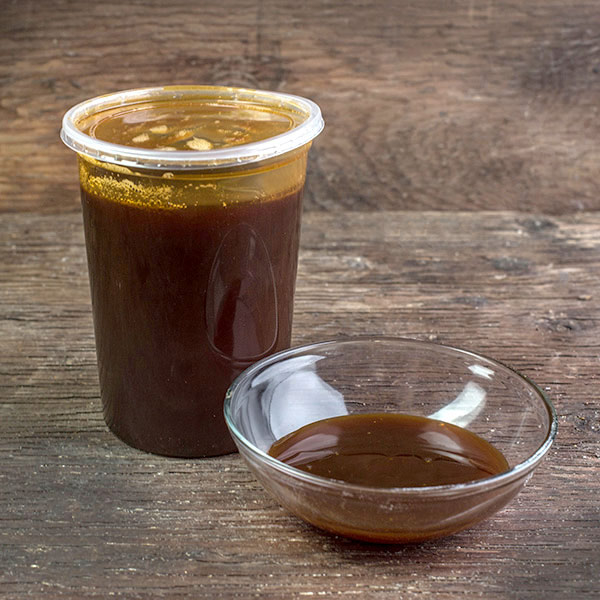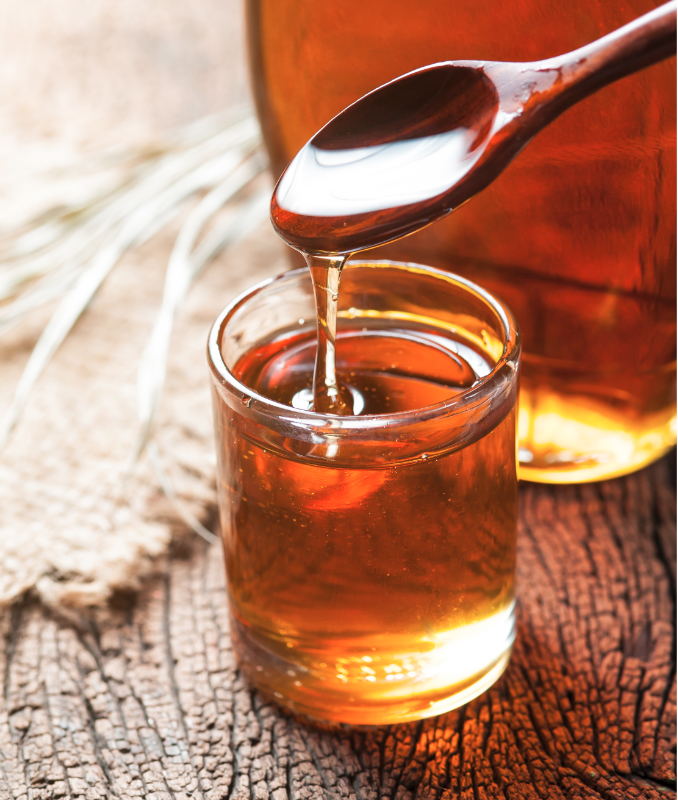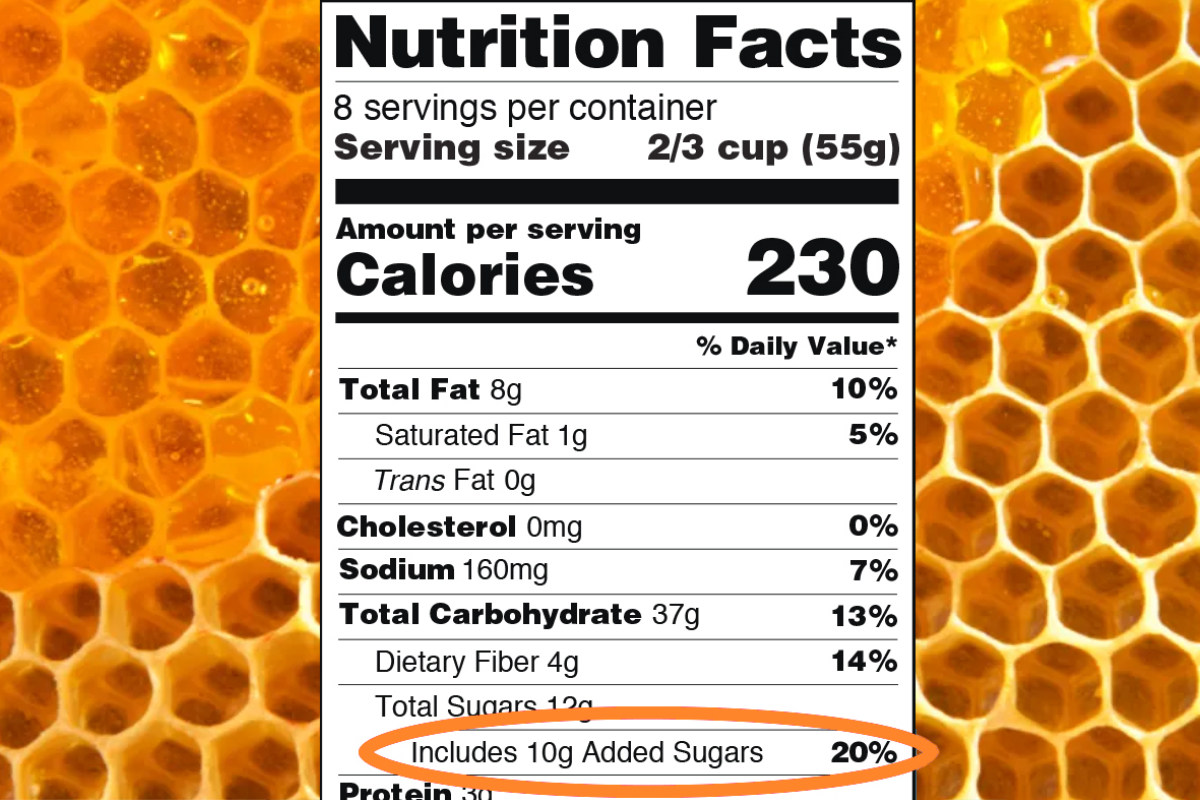Reprinted from: Food Business News
KANSAS CITY — The sources of full-calorie sweeteners sound like items one might have found in trading posts in the 19th century: barley, honey and maple syrup.
Such natural sweeteners have long histories in the food industry, and they may fit nicely in today’s clean label trend, which favors recognizable ingredients over chemical-sounding ones. Malted barley extracts, honey, and maple syrups and sugar all offer distinctive flavors and nutritional traits as well.
Malt Products Corp., Saddle Brook, N.J., offers malted barley extracts.
“It has been described as nutty and mildly sweet with roasted, toasted, cereal, caramel, coffee carob notes,” said Amy Targan, president of Malt Products Corp. “Depending on the malted barley grain profile, flavor can range from milder and sweeter to a more roasted, bitter overall taste.”
The flavor intensity correlates primarily with the malt extract’s inclusion and dilution per cent, she said.
“In bread, bagels and pretzels it adds a subtle flavor and aroma,” Ms. Targan said. “In bakery products it is important for its Maillard effect and hygroscopicity. In ice cream and confectioneries it has a distinct nostalgic flavor reminiscent of malted milk shakes. In beverages, it can have the flavor of beer, nutty toasted cereal or malted milk depending on the other ingredients in the beverage.”
 Malt extract has a glycemic index of 40, and Ms. Targan called it a “sugar of substance” in that it is a source of antioxidants, essential amino acids, vitamins and minerals.
Malt extract has a glycemic index of 40, and Ms. Targan called it a “sugar of substance” in that it is a source of antioxidants, essential amino acids, vitamins and minerals.
Differences arise between basic malts and specialty malts, said Julie Giebel, technical service representative for Briess Malt & Ingredients Co., Chilton, Wis. The company roasts or kilns material to create specialty malts.
“The higher the temperature you put on there and the longer you keep it, you start to create some colors and some flavors that glisten,” she said. “So there are two different ways that you can actually create different colors and flavors. Obviously, the deeper colors, the deeper flavors, they all come with roasting.”
Basic malt extracts work well in masking flavors, including metallic-type flavors in items fortified with minerals, she said. Specialty malt extracts might work better in applications where sweet, caramel notes are desired, like in certain ice cream items, or in applications where a deep, molasses flavor is desired.
Clean label may be another benefit for malt extracts.
“I know in talking to manufacturers that deal with consumers, they consider it a very clean label,” Ms. Giebel said. “It’s very label friendly because it is listed just as malt extract.”
Honey was perceived as a natural sweetening agent by 94% of surveyed individuals in a 2018 study from Kerry called “Sensibly sweet; Formulating for clean label taste.” Honey contains 181 compounds, including various sugars, acids, enzymes and minerals, said Catherine Barry, director of marketing for the National Honey Board, Frederick, Colo.
“The carbohydrates and acids in honey provide both a sweetness and tartness that enhance most food and beverage formulas by smoothing rough flavors without overpowering the overall flavor profile,” she said.
Honey also has more than 3,000 varietals, all based on where honey bees forage for nectar, which gives product developers unlimited opportunities to enhance the flavor of a product with one ingredient, she said.
“For example, buckwheat honey can be used when a formula calls for a strong, earthy flavor, or orange blossom can be used when a recipe needs a more delicate sweetness with citrus undertones,” Ms. Barry said.
The intensity of honey’s flavor depends on its usage level in a product.
“In whole wheat bread, bakers may use honey simply to smooth the bitter edges of whole grain flours,” Ms. Barry said. “In an application such as this, honey is used more as a masking agent and not to bring an intense sweetness to a product. Conversely, a beverage manufacturer may want the honey in an R.-T.-D. formula to dominate the flavor profile and therefore would increase usage rates to deliver a sweet finish.”
 Indiana Sugars, Gary, Ind., offers maple syrups and sugars that deliver several distinctive flavors.
Indiana Sugars, Gary, Ind., offers maple syrups and sugars that deliver several distinctive flavors.
“Maple adds an extra depth of flavor,” said Scott Sievers, vice-president of sales. “Maple’s unique flavors range from slightly smoky, buttery, to a little nutty, with hints of vanilla, cinnamon and hazelnut.”
The flavors work well with vegetables, baked foods, fish, meats, dressings, granola and health drinks, he said.
“Maple syrup is all natural,” Mr. Sievers said. “The maple water is extracted from the trees and condensed into maple syrup. The maple sugar is 100% dehydrated maple syrup.”
Nutrition-wise, maple syrup contains vitamins B1, B2, B3 and B6 along with calcium, iron, potassium, magnesium, copper, zinc, phosphorus and manganese.
“Refined sweeteners have very little, if any, of the trace elements that were originally in the actual plant,” Mr. Sievers said.
Clean label is another benefit.
“Customers recognize that most sweeteners are refined or minimally refined, and they know that maple syrup is all natural and comes from trees,” Mr. Sievers said. “I also think consumers have associated maple syrup with pancakes and breakfast for years, but this perception is changing. Maple is being used in health foods, granola, energy bars, meat, liquor, nutraceuticals and much, much more.”
Sweet potatoes are another source of sweeteners. Carolina Innovative Food Ingredients, Inc., Nashville, N.C., offers Carolina Sweet, a sweet potato-based sweetener that may be used in creating a barbecue sauce with a flavor profile that combines sweetness, smokiness and a slight twang. Carolina Sweet has a warm brown color and warm flavor profile that contributes to the color and flavor of barbecue sauce, which permits a reduction in the amount of other ingredients like brown sugar or artificial colors and flavors. Other potential sauce applications include vinegar-based sauces and Southeast Asian sauces.
—————

Allulose potential: How low can sugar levels go?
F.D.A. guidance should clear the way for the rare sugar’s use in sugar reduction efforts.
Now that the Food and Drug Administration has issued draft guidance saying it will allow allulose, a rare sugar, to be excluded from the total sugars declaration and added sugars declaration on the Nutrition Facts Label, manufacturers are free to explore how much sugar may be reduced in various food and beverage categories.
The ingredient already had Generally Recognized As Safe (GRAS) status for use as a sweetener in applications like beverages, dairy items, yogurt, jams, jellies, confectionery items and baked foods, said Jim Carr, vice-president, sweetener applications for Tate & Lyle, P.L.C.
“We see relevance for allulose in any and all of these due to the functional benefits that allulose brings to a formulation beyond simply the sweetness and temporal profile of sucrose, which it matches very closely, with almost identical onset and no linger or bitterness,” he said. “It also provides bulk and texture, mouthfeel, freezing point depression, sweetener synergy, to name just a few. In addition, allulose does not raise blood sugar or insulin levels, making it a great solution for people with diabetes or those simply concerned with sugar consumption.”
The F.D.A. issued its draft guidance in the April 18 issue of the Federal Register after reviewing a citizen petition from Tate & Lyle. Previously, allulose counted both as sugar and added sugar on the Nutrition Facts Label. The draft guidance also says allulose may count as 0.4 calories per gram, down from 4 calories per gram. The F.D.A. will begin enforcing the mandatory declaration of added sugars on the Nutrition Facts Label on Jan. 1, 2020. Added sugars are sugars that either are added during the processing of foods or are packaged as such.
The highest inclusion rates for allulose, and thus the highest potential for sugar reduction, are in confectionery, at 50%, and bakery and desserts, at 25%, Mr. Carr said.
“Although lower in terms of inclusion rate, there is great opportunity to significantly reduce sugar and calorie consumption across the various segments of the beverage industry,” Mr. Carr said.
Allulose provides freeze-thaw stability and has been shown to work in ice cream and frozen beverages, according to London-based Tate & Lyle, which commercialized Dolcia Prima allulose in 2015. The company has worked with food and beverage companies to incorporate allulose into products for several years, said Abigail Storms, vice-president, commercial sweetener platform lead.
Ingredion, Inc., Westchester, Ill., also is involved in allulose. The company in December 2018 entered a relationship with Matsutani Chemical Industry Co. Ltd., a company in Japan that developed Astraea brand allulose, which is 70% as sweet as sugar. Rare sugars are monosaccharides existing in small quantities in nature, according to Matsutani Chemical Industry Co. Ltd.
“We are actively working with customers who are looking to harness the potential that allulose brings in reducing the grams of sugar in food and beverage products without negatively impacting their taste or eating quality,” said Afrouz Naeini, regional platform leader for sugar reduction in the United States and Canada for Ingredion.
Astraea allulose works synergistically with stevia to replace up to 100% of sugar while keeping great taste, she said.
Anderson Advanced Ingredients, Irvine, Calif., offers allSweet allulose that is temperature-stable and browns like sugar when baking, according to the company. It lowers the freezing point of frozen products to create low-calorie desserts and ice cream.

